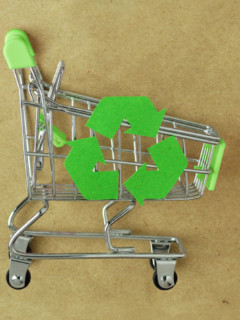When something runs smoothly, that’s always a good thing. Really? At DHL you told us something different. Namely about film mailing bags that can’t run over the roller conveyors due to insufficient friction and therefore fall by the hundreds (thousands?) into large collection bins. There they are processed by hand once a day. This is annoying in individual cases and means that your goods could have reached the customer a day earlier. However, if numerous consignments from one and the same sender come to light during manual post-processing, this has more far-reaching consequences: In such cases, DHL may contact the sender and refuse to process these shipments in the future.
The principle of minimising friction
Whew. Frictionless is different! So we checked with DHL and found out what makes a “good” shipping bag from a transport perspective. And we found what we were looking for in ISO standard 8295:Whenever two surfaces come into direct contact with each other, micro-interlocking takes place: The surfaces, depending on the sliding friction coefficient of the materials, interlock to a greater or lesser extent and thus slow down the movement. There are several sports that make use of the principle of minimising friction: The ski is waxed again before the descent, the ice in front of the curling stone is wiped – to remove dirt, but also to warm up the ice and thus allow the stone to glide on the water film for as long as possible.
The sliding coefficient of friction makes the difference in postal packages
The coefficient of sliding friction is given in µ and is defined by the two materials in contact with each other and the associated surface structures. The weight of the objects and the contact surface do not play a role; on the other hand, whether a surface is wet, dry or possibly even greasy plays a major role. The higher the value (it is determined by means of special test methods and amounts to a maximum of: 1µ*), the higher the “interlocking” of the two materials with each other. Wood on wood (dry), for example, has a coefficient of sliding friction between 0.3µ and 0.5µ, while steel on ice – for example, on ice skates – has a value of 0.03µ.Back from the ice rink to the roller conveyor: for a film to be registered and transported by machine at DHL, it must meet a coefficient of sliding friction between 0.15µ and a maximum of 0.20µ (ISO 8295). ecco: It does, the Eco! With our Eco opaque shipping bags, even large quantities can be shipped smoothly and without delays. Thanks to its material composition, it can be processed by machine and two of the four available formats are even postage-optimised for dispatch as a large letter. So the Eco is a big player among postal packaging!
* Don’t confuse µ (pronounced: mü) with the thickness of the material. Here µ is meant as a dimensionless key figure (e.g. 0.6) that strengthens or weakens the frictional force.














